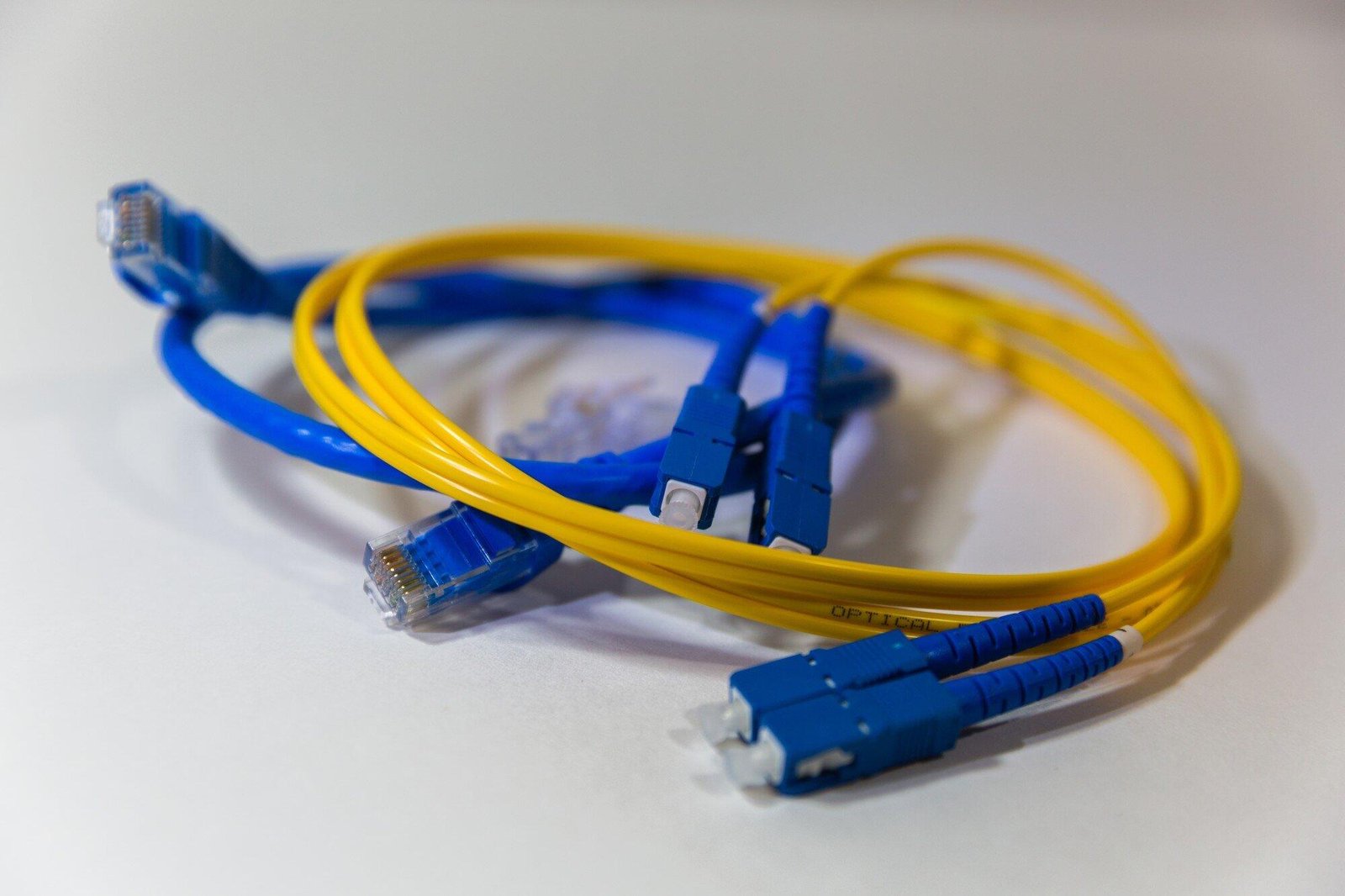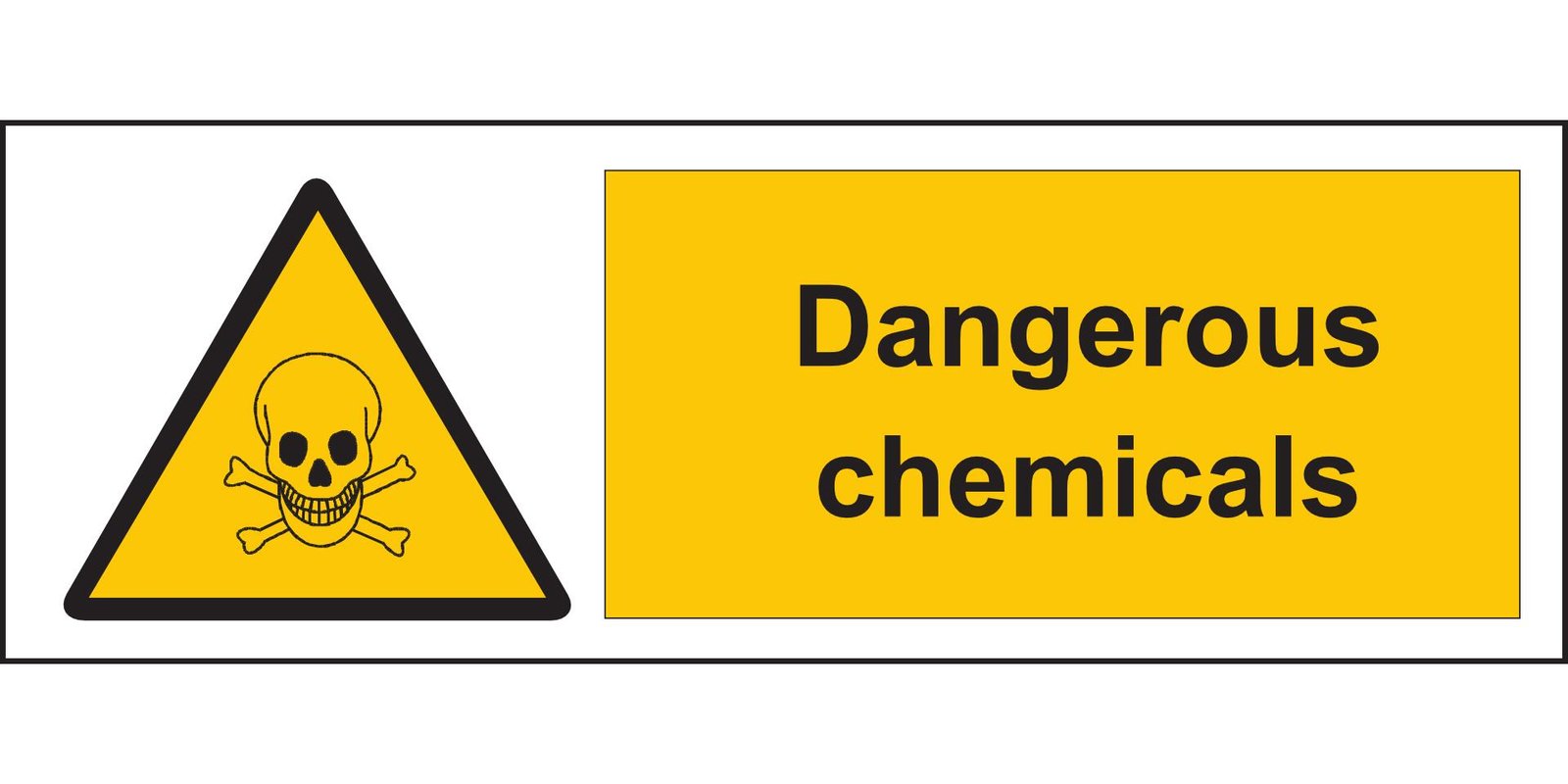Technology
The Future of Labeling: Trends and Technologies Shaping the Industry

Table of Contents
- Introduction to Labeling
- Importance of Effective Labeling
- Emerging Trends in Labeling Technology
- Regulatory Compliance and Standards
- Sustainability in Labeling
- Future Outlook
Introduction to Labeling
Identification, safety, and compliance of products are all greatly impacted by labeling. It gives customers vital details about the product, such as components, usage guidelines, and safety alerts. In recent years, significant advancements in labeling technologies have transformed the industry. For instance, integrating medical device label software has streamlined the labeling process, making it more efficient and accurate. This software enhances the precision of information displayed on labels and speeds up the approval process, ensuring that products reach the market faster.
Importance of Effective Labeling
Effective labeling is vital for several reasons. It helps maintain regulatory compliance, improves brand reputation, and guarantees that consumers have access to accurate information. A well-labeled product can also improve shelf appeal and consumer trust. In regulated industries like pharmaceuticals, labeling accuracy can even be a matter of life and death. Mishandling labeling information can lead to severe consequences, such as recalls or legal actions, making it essential for companies to invest in reliable labeling solutions. Additionally, consumers often rely on labels to make informed decisions, particularly when it comes to allergens, nutritional content, and safety warnings.
Emerging Trends in Labeling Technology
- Smart Labels and QR Codes
- RFID Technology
- Eco-friendly Labeling Materials
- Automation and Digital Printing
The labeling industry is rapidly evolving, with several innovative trends taking center stage. For instance, smart labels and QR codes have seen significant adoption. These technologies allow consumers to access additional product information via their smartphones, enhancing transparency and engagement. Smart labels can provide real-time data regarding the product’s condition, origin, and even expiration date. Similarly, RFID technology is being adopted for its ability to track products throughout the supply chain, enhancing traceability and reducing instances of counterfeiting. Eco-friendly labeling materials, like compostable labels and water-based adhesives, are gaining traction as companies strive to reduce their environmental footprint. Additionally, automation and digital printing are revolutionizing how labels are produced, allowing for greater flexibility, customization, and speed.
For example, using smart labels and QR codes not only enhances consumer interaction but also provides manufacturers with valuable data on product usage and customer preferences. On the other hand, supply chain losses and inefficiencies are greatly decreased with RFID technology, which provides unmatched advantages in tracking and inventory management.
Regulatory Compliance and Standards
Navigating regulatory requirements is a major focus for companies. Companies must stay up to date because industry and regional standards and laws differ. Important regulatory organizations like the FDA and EMA frequently publish guidelines that influence best practices for labeling. Compliance involves more than just following the law; it also involves protecting the confidence and safety of customers. Companies must be vigilant about updating their labeling practices to meet the latest regulations, which can often involve comprehensive audits and extensive documentation.
It’s worth noting that regulatory bodies continually evolve their standards to address new challenges, such as the rise of e-commerce and global supply chains. More information about recent changes in labeling regulations can be found in online exclusives from trusted industry sources. These updates emphasize the importance of clear and accurate communication, making it crucial for companies to invest in technologies that simplify compliance, such as automated label verification systems and centralized labeling databases.
Sustainability in Labeling
As environmental concerns grow, the push for sustainable labeling solutions is stronger than ever. Companies are exploring biodegradable materials, reducing waste, and implementing recycling programs. Sustainable labeling not only benefits the environment but also appeals to eco-conscious consumers. Eco-friendly materials like compostable labels and water-based adhesives are gaining popularity, enabling brands to reduce their carbon footprint. Opting for sustainable labeling practices can also positively impact a company’s brand image, as consumers today prioritize sustainability more than ever before.
In addition to reducing environmental effects, using sustainable materials and labeling techniques supports business social responsibility programs. In a congested market, brands that actively pursue sustainability in their labeling procedures might stand out and draw in a devoted following of customers who value their efforts.
Future Outlook
The future of labeling is dynamic and full of potential. We may anticipate additional developments in technology that improve compliance, simplify procedures, and provide more environmentally friendly choices as it moves forward. Businesses hoping to maintain their competitiveness in the market will need to pay close attention to these changes. Integrating artificial intelligence and machine learning in labeling processes is another area to watch, as it can revolutionize how products are labeled and tracked. AI can be used to optimize label designs for better readability and regulatory compliance, while machine learning algorithms can predict and prevent errors in the labeling process.
Additionally, the rise of the Internet of Things (IoT) is set to transform the labeling landscape further. Connected devices can communicate directly with smart labels, offering real-time updates on a product’s status, such as its location, temperature, and shelf life. This level of connectivity can significantly enhance supply chain efficiency and product safety, ultimately benefiting both manufacturers and consumers.
Technology
Are You Underestimating the Role of the CMMC in Your Cybersecurity Plan?

Many organizations assume their cybersecurity measures are robust enough, but they often overlook a critical framework: the Cybersecurity Maturity Model Certification (CMMC). This essential tool not only ensures compliance with industry standards but also actively strengthens security measures. In an era of ever-evolving threats, it’s not just about passing an audit. It’s about protecting your data, your contracts, and your reputation. Let’s explore how underestimating the CMMC can lead to serious risks for your organization’s cybersecurity plan.
Increased Vulnerability to Advanced Persistent Threats and Data Breaches
When the CMMC assessment guide is ignored or under-prioritized, organizations may unknowingly expose themselves to advanced persistent threats (APTs) and data breaches. APTs are sophisticated attacks where hackers establish a long-term presence within a network to siphon off sensitive information slowly. Without proper CMMC implementation, such breaches can occur undetected for extended periods, allowing attackers to compromise valuable data, often without immediate signs of intrusion.
The CMMC assessment guide emphasizes structured security protocols that actively detect and respond to these stealthy threats. Companies that fully integrate CMMC into their cybersecurity plans are better equipped to thwart these attacks before they cause serious damage. By aligning their defenses with CMMC standards, businesses ensure consistent monitoring, reducing the chance of data breaches and safeguarding their assets.
Loss of Defense Contracts Due to Non-Compliance with CMMC Standards
Compliance with CMMC standards is no longer a choice but a necessity, especially for organizations seeking government defense contracts. Failing to meet these requirements means losing out on lucrative deals and jeopardizing business growth. The Department of Defense (DoD) mandates CMMC compliance for all its contractors, making it a foundational element of securing defense contracts.
The CMMC assessment guide provides clear directives to help companies align their cybersecurity efforts with federal requirements. By adhering to these guidelines, businesses not only meet DoD standards but also establish themselves as reliable partners. This credibility can be a competitive advantage, demonstrating a commitment to securing sensitive information. Ignoring CMMC standards can lead to missed opportunities, costing businesses both financially and reputationally.
Financial Penalties and Legal Consequences from Security Failures
Overlooking the role of the CMMC can result in financial setbacks and potential legal troubles. Non-compliance with CMMC guidelines can attract fines and legal action, particularly if a security failure results in data breaches involving sensitive government information. These breaches can lead to a cascade of legal issues, including lawsuits from affected parties and penalties from regulatory bodies.
The CMMC assessment guide offers a clear roadmap to avoid these pitfalls. It promotes rigorous security measures that reduce the likelihood of breaches, making compliance not just a regulatory obligation but a smart financial decision. Investing in proper CMMC compliance helps mitigate risks, ensuring that organizations don’t face unnecessary financial penalties or legal battles, both of which can drain resources and damage credibility.
Compromised Supply Chain Security Impacting Critical Operations
A weak supply chain can be a major vulnerability, and failing to incorporate the CMMC into your cybersecurity strategy increases this risk. Hackers often target suppliers as a gateway to larger enterprises, exploiting weaker links in the chain. If a vendor or partner fails to comply with CMMC standards, it can open the door to malicious actors, compromising critical operations and exposing sensitive data.
The CMMC assessment guide emphasizes a comprehensive approach to securing the entire supply chain. By requiring all contractors and vendors to adhere to the same standards, it fortifies the entire ecosystem. This proactive stance ensures that each link in the chain remains secure, maintaining the integrity of operations. Ignoring these standards can lead to disruptions, operational downtime, and loss of sensitive information, impacting business continuity.
Erosion of Trust Among Clients and Partners in Sensitive Industries
Trust is hard to earn but easy to lose, especially in industries dealing with sensitive information. Non-compliance with CMMC standards can erode the confidence that clients and partners place in an organization. If a data breach occurs due to inadequate cybersecurity measures, it can damage long-standing relationships and lead to lost business.
The CMMC assessment guide helps build trust by ensuring that organizations meet stringent security standards. By implementing these measures, businesses can assure clients and partners that their data is safe, reinforcing trust and strengthening relationships. Failing to prioritize CMMC compliance can signal a lack of commitment to security, prompting clients to seek partnerships with more secure, compliant organizations.
Limited Incident Response Capabilities Leading to Prolonged Recovery Times
Effective incident response is vital for minimizing damage during a cyberattack. Organizations that neglect CMMC guidelines often have limited incident response capabilities, leading to longer recovery times and greater financial losses. Rapid response is key to containing attacks and preventing further damage, but this can be difficult without structured protocols in place.
The CMMC assessment guide provides a foundation for developing efficient incident response strategies. It encourages organizations to establish clear response plans, ensuring that all team members understand their roles during a breach. By adhering to CMMC standards, businesses can enhance their incident response capabilities, reducing recovery times and minimizing financial impacts. Neglecting this framework can result in prolonged outages, greater losses, and lasting damage to brand reputation.
Technology
Wiring Types Explained: From Copper to Fiber Optics

Have you ever thought about the different types of wires that power your home? Choosing the right home electrical wiring is important for both safety and performance.
From copper wires to coaxial wiring, each type has its own benefits. Understanding these options can help you make better decisions for your home setup. Ready to learn more about what runs behind your walls? Keep reading to explore the best wiring types for your needs!
Copper Wiring
Copper wiring is one of the most commonly used types of wiring in home electrical wiring systems. It is known for its excellent conductivity, which helps in efficient power transmission. Copper wiring is durable and can handle higher electrical loads without overheating. It also resists corrosion, making it a reliable option for long-term use.
In residential homes, copper wiring is often preferred for safety reasons. This type of wiring is flexible and easy to work with, which simplifies installation. Copper wiring is used in a variety of applications, from household wiring to industrial machines. Despite being more expensive than other options, its benefits often outweigh the cost.
Aluminum Wiring
Aluminum wiring is a lighter and less expensive alternative to copper wiring. It is commonly used in power distribution for large-scale applications, such as utility grids. Though it conducts electricity well, aluminum wiring is not as efficient as copper and requires a thicker gauge to handle the same electrical load.
One drawback of aluminum wiring is that it expands and contracts more with temperature changes, which can cause loose connections over time. This may lead to a higher risk of overheating if not properly installed. In household wiring systems, aluminum wiring was sometimes used in older homes in place of copper, but today it is less common for residential purposes.
Fiber Optic Wiring
Fiber optic wiring is a modern solution used for transmitting data at high speeds. Unlike copper or aluminum wiring, it uses thin strands of glass or plastic to send signals in the form of light. This makes fiber optic wiring ideal for internet connections, as it provides faster speeds and greater bandwidth.
It is also less prone to interference from electrical signals, ensuring a more stable and reliable connection. One advantage of fiber optic wiring is that it can transmit data over long distances without losing signal strength. It’s also resistant to corrosion and more durable than traditional wiring. For more information on installing fiber optic systems, check out structured cabling installation linked here.
Coaxial Wiring
Coaxial wiring is a type of electrical cable commonly used for transmitting television signals and internet connections. It has a central copper conductor surrounded by insulation, a metal shield, and an outer plastic cover.
The design helps protect the signal from interference, making it reliable for sending data over short distances. Coaxial cables are often used in home entertainment systems, connecting TVs to cable or satellite services. They are also used in some internet and telephone systems.
Learn More About Wiring Types
There are different types of wiring for different needs. Copper and fiber optics are the most common options. Each has its own benefits and drawbacks.
Understanding these can help you make the right choice. You can find more information online or in guides. Knowledge of wiring types can help you in your projects.
Looking for more tips and ideas? We’ve got you covered. Check out some of our other posts now.
Technology
The Ultimate Guide to SDS Software: Everything You Need to Know

Are you trying to make safety data easier to manage?
The right SDS software can help. Keeping up with safety data sheets is important for staying safe and following the rules. This guide gives you everything you need to know about SDS software, including its features, how it can help, and tips for using it.
Learn how the right software can save time, make work easier, and keep things safe. Whether you’re new to SDS software or thinking of switching, this guide will help you find the best solution for your needs.
What SDS Software Does
SDS software helps businesses organize their safety data sheets in one place. It makes it easy to store and find important information about chemicals, including hazard warnings and how to handle them safely.
This software is also useful for keeping a detailed hazmat inventory, making sure all dangerous materials are listed and tracked. With SDS software, businesses can quickly access up-to-date safety data.
You can find the best online SDS here to make managing safety data simpler and more efficient.
How It Saves Time
SDS software helps save time by doing many tasks automatically. Instead of sorting through papers or updating files by hand, the software does it for you. This means less time is spent looking for safety information or checking details on dangerous materials.
The system makes it easy to find the data you need quickly, which is useful for safety checks or inspections. Whether you are dealing with chemicals or focusing on water safety, SDS software makes the process faster and easier.
By reducing manual work, it gives businesses more time to focus on other important tasks.
Why Compliance Matters
Following safety rules helps keep people safe and stops fines. SDS software makes it easier for businesses to follow these rules by keeping safety sheets in order. When you stay compliant, you have the right information about dangerous materials, so workers know how to stay safe.
This helps prevent accidents and keeps the business ready for safety checks. If rules are not followed, companies can get fined, shut down, or have workers get hurt.
Using SDS software makes it simple to follow safety rules, keeping both the workers and the business safe from problems.
Choosing the Right Software
Picking the right SDS software is important for safety and getting work done quickly. Start by finding software that is easy to use, with a simple layout that everyone can understand.
Look for features that meet your needs, like automatic updates for safety sheets and tools to manage dangerous materials. Good customer support is also important, as it helps fix problems fast.
Make sure the software allows easy access to information on both computers and phones. Reading what other users say about the software can help you decide.
By choosing the right SDS software, your business can improve safety, and make sure everyone has the information they need.
Unlocking Safety and Efficiency with SDS Software
In conclusion, SDS software is important for managing safety data sheets and following safety rules. Using the right SDS software helps businesses work faster, reduce accidents, and save time.
It allows workers to quickly find important safety information, making it easier to handle dangerous materials. Investing in SDS software is key to creating a safer workplace and improving how your business runs.
With the right tools, everyone can stay safe and do their jobs better.
Did you find this article helpful? You can check out our website for more awesome content like this.

 Entertainment6 months ago
Entertainment6 months agoSandra Orlow: Exploring the Life and Legacy of a Cultural Icon

 Business7 months ago
Business7 months agoTex9.Net Crypto: Fast, Secure International Money Transfers with Competitive Rates

 General2 months ago
General2 months agoBaby Alien Fan Bus: Watch Parts 2 & 3 on Twitter, Reddit!

 General2 months ago
General2 months agoDiana Nyad & Bart Springtime: A Swim to Success

 Business7 months ago
Business7 months agoSnapchat Planets: Exploring Your Streak Universe

 General5 months ago
General5 months agoDeeper Dive into myfavouriteplaces. org:// blog

 Business7 months ago
Business7 months agoWhat is O Farming: How to Make Money Online and Its Start-Up Benefits

 Business7 months ago
Business7 months agoFintechZoom Apple Stock: Real-Time Insights and Expert Analysis
















